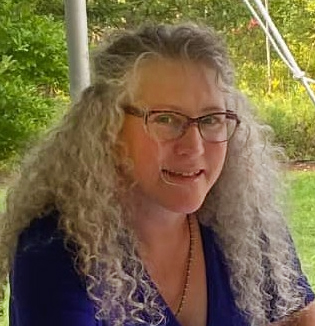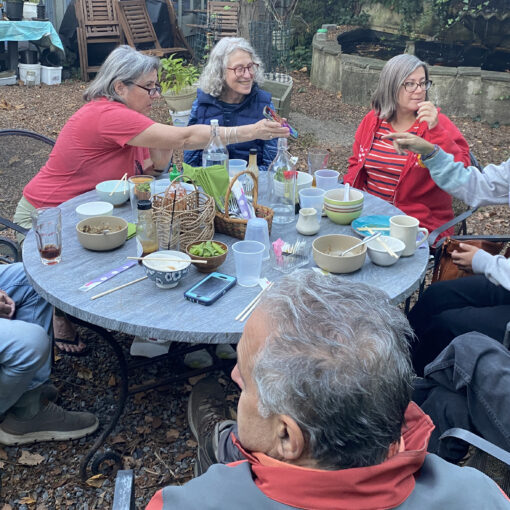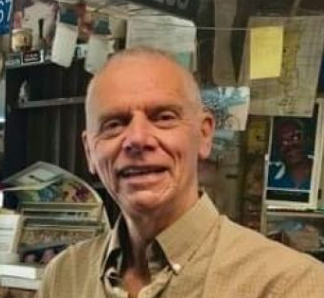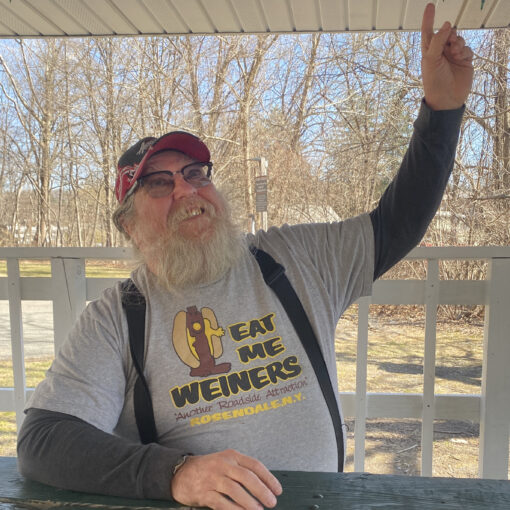September 28, 2023
R: So, Michael, tell me about your connection to Rosendale. How’s that?
M: Okay. When my wife and I got married 27 years ago on October 13th, we actually first went to Woodstock for our honeymoon. We explored the area and that’s when we first discovered High Falls, Rosendale, and a lot of the other communities around the reservoir and then slightly north of Woodstock. And then we would come up here every year for our wedding anniversary. So we came up here for our honeymoon, but then we would come up every year for our anniversary.
R: What do you mean?
M: And we’re sort of like traditionalists. You know, it’s like we establish a thing and then we just do it over and over and over again because we like it. And for 20 of those years, we lived in New York City in Noho. I went to art school at the Cooper Union and I lived on Cooper Square for 41 years in a loft there and then Liz moved in when we got married.
M: So Rosendale became one of the little villages that we’d like to come up and visit every year. We would stay at what was then Captain Schoonmaker’s. We were living in New York City. I think the person who ran the place was June or Jane or something like that.
R: Is that the place on Main Street?
M: Judy.
Maria: No, it’s on 213.
R: It’s down the road from here, I think. Yes, isn’t it? And then they sold it when we moved up here, which, I guess we sort of took as a sign that we’re supposed to move to Newburgh because our wedding anniversary place was gone. So at any rate, so we’d like to come up here and then just sort of walk around and enjoy the overall essence of the place.
R: If you were to bring someone here to experience that, where would you bring them?
M: No place in particular, we’re sort of like into built environments and so we like not so much a particular place but how a place is put together and the kind of architecture that predominates and why it’s there and how it got to be there historically and the various different kinds of storefronts and those storefronts have changed over the years. But they tend to be the same kinds of thrift stores and artsy-fartsy hippie-dippie kind of things.
R: It’s an accurate description.
M: I’m a Woodstock dinosaur myself. So I’m old enough to have seen Jimi Hendrix perform live at the [home artist].
R: Cool.
M: So that’s going way back.
R: And tell me something interesting that happened to you during one of your visits to Rosendale that reflects what you think is great about Rosendale.
M: I don’t come here because it’s interesting. I come here because it’s familiar or the things about it that were interesting are now familiar and we like just exploring them in greater depth.
R: Nice. And what would you miss if it disappeared and why?
M: The reassuring feeling that it gives me when I come up here.
R: What’s one of the physical features of Rosendale that you would miss that was going on? Again, it’s like the whole package.
M: So the main street, the Victorian architecture, the colors, the railway thing up there, the trestle.
R: And what would you change if you could?
M: We started a small business when we came up here. My wife was an executive at one of the largest Medicaid managed care plans in the state of New York. That was owned by Presbyterian Hospital and I had a career doing public art installations. That got me tied up in court and going to the Supreme Court. Things like that, plus working in advertising. And then we both left that to come up here and start a business that sort of captured both of our interests. There’s like interior decorating and textiles and things like that and furniture and so on.
I spent five years, four to five years working with what was at the beginning a handful of like a dozen people into a movement of a quarter of a million people just keep fracking out of New York state. And I got to meet a lot of interesting people that way. Bobby Kennedy, Mark Ruffalo, Yoko Ono, and so on. I did a commercial for Yoko.
What came out of that is starting a business looking for distressed homes that had historical or other kinds of character that had good bones and restoring them so that their carbon footprint was reduced by 85 to 90 percent. So, you know, the heating and cooling costs were on the building we were living in, in Newburgh for four years. We had an apartment downstairs that tenant didn’t need to use any air conditioning at all and the heat bill was like $25 a month.
And upstairs I used the air conditioner and the attic. You know how attics get really like pressure cookers? I needed an air conditioner maybe two or three hours in the way afternoon for a few weeks in July and August.
So the concept being there also that the greenest buildings are the ones that already exist instead of building new passive houses which is like building something from scratch. They’re very tight. They’re extremely efficient. But they cost $300 a square foot and upwards and we’re able to get this done for about $125 a square foot. So we’d like to bring some of that to Rosendale.
R: Sounds great.
M: Thank you.
R: Thank you so much.




